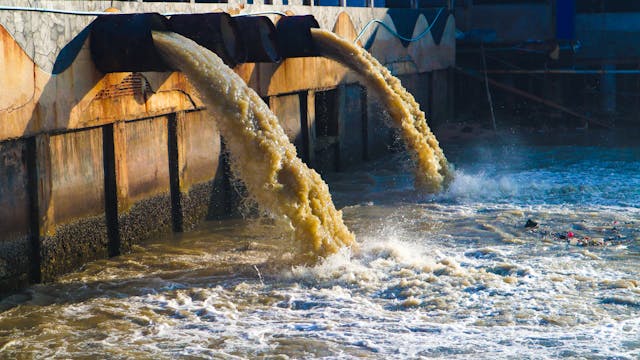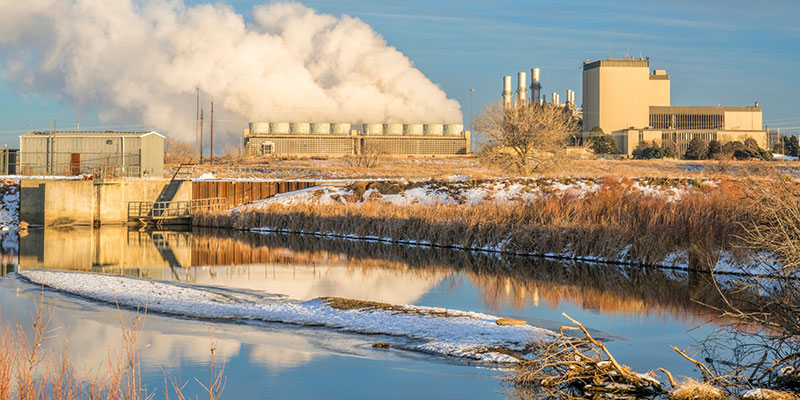Innovations and Breakthroughs in Industrial Waste Water Treatment Technologies
The landscape of commercial wastewater therapy is going through a transformative change, driven by technologies that boost both performance and sustainability. As regulatory standards evolve, the integration of AI and machine knowing into wastewater management systems promises to streamline operations and ensure conformity.
Review of Drainage Treatment Technologies
Wastewater treatment technologies encompass a range of methods designed to get rid of impurities from industrial effluents before their launch right into the atmosphere. These innovations are crucial for maintaining eco-friendly equilibrium and making sure compliance with ecological guidelines. The main categories of wastewater therapy consist of physical, chemical, and biological approaches, each offering distinct objectives based upon the nature of the pollutants existing.

Biological therapy approaches employ microorganisms to break down raw material, making them especially efficient for organic-rich effluents. Strategies like activated sludge and biofilm reactors harness the all-natural destruction capacities of bacteria, resulting in considerable decreases in biochemical oxygen need (FIGURE)
Advanced Purification Techniques
Advanced filtration techniques represent an important advancement in the world of commercial wastewater therapy, enhancing the efficiency of contaminant removal processes. Industrial Waste Water Treatment. These methods include a variety of innovations, consisting of microfiltration, ultrafiltration, nanofiltration, and reverse osmosis, which supply consecutive barriers for various fragment sizes and chemical structures
Microfiltration and ultrafiltration utilize membrane layer systems to get rid of suspended solids, bacteria, and larger natural molecules, enhancing the quality of effluent prior to additional treatment. Nanofiltration bridges the space between ultrafiltration and turn around osmosis, efficiently removing natural compounds and divalent ions, hence lowering the lots on downstream procedures.
Reverse osmosis uses the greatest level of filtration by enabling only water and small particles to go through its semi-permeable membrane layers, making it suitable for recovering premium water from industrial effluents. Current improvements in membrane technology, including the development of even more fouling-resistant and durable products, have significantly boosted functional efficiency and lowered expenses.
Incorporating these innovative filtering techniques not just enhances the total treatment procedure however additionally contributes to sustainability initiatives by allowing water reuse and resource recuperation in industrial setups. (Industrial Waste Water Treatment)
Biological Therapy Innovations

Additionally, the development of crafted biological systems, such as membrane layer bioreactors (MBRs), integrates biological therapy with innovative membrane filtration. This assimilation permits higher effluent high quality and lowered impact, making it suitable for additional hints space-constrained commercial facilities. my explanation Innovations in genetically crafted microorganisms have actually also arised, improving the biodegradation of details contaminants, such as drugs and heavy steels, that are typically testing to eliminate.
In addition, the application of bioaugmentation approaches, where helpful microbes are presented to enhance the existing organic treatment procedures, has revealed promising results in boosting treatment efficiency. These innovations collectively indicate a trend in the direction of more sustainable and efficient biological treatment techniques that can adapt to the progressing intricacies of industrial wastewater streams. As industries proceed to focus on environmental compliance, these biological advancements will certainly play a crucial function in wastewater monitoring.

Resource Recovery Approaches
In industrial settings, the assimilation of resource recovery approaches has become significantly important for boosting sustainability and lessening waste. These methods concentrate on drawing out valuable products and energy from wastewater streams, therefore transforming prospective pollutants into multiple-use resources.
One prominent technique is nutrient healing, where nitrogen and phosphorus, frequently existing in excess in wastewater, are caught and exchanged plant foods. This not just check these guys out decreases ecological influences yet also provides a round economic situation solution for farming applications. Additionally, innovations such as anaerobic food digestion enable the conversion of natural waste right into biogas, a renewable resource resource that can offset nonrenewable fuel source use in commercial procedures.
Additionally, progressed purification and membrane innovations assist in the recovery of industrial spin-offs such as salts and steels. These recovered materials can be reintegrated into manufacturing procedures, lowering the need for virgin resources.
Future Patterns in Drainage Monitoring
As sectors increasingly prioritize sustainability, the future of wastewater administration is readied to undertake substantial transformations. Technological innovations, such as expert system and artificial intelligence, will certainly allow a lot more reliable surveillance and monitoring of wastewater systems. These modern technologies can forecast upkeep demands, enhance treatment processes, and enhance decision-making, ultimately reducing operational costs and ecological influence.
In addition, the assimilation of round economic situation concepts will play an important function in wastewater management. Industries are expected to shift in the direction of systems that not just treat wastewater but also recoup beneficial sources, such as nutrients, water, and energy. This transition will certainly lessen waste and promote the reuse of materials, aligning with global sustainability objectives.
Arising treatment techniques, such as membrane layer bioreactors and advanced oxidation processes, will certainly additionally improve the effectiveness of wastewater therapy, permitting better effluents appropriate for reuse. In addition, governing frameworks are most likely to progress, emphasizing more stringent requirements for wastewater discharge and encouraging sectors to embrace innovative therapy services.
Verdict
To conclude, the development of commercial wastewater treatment technologies shows a significant change towards boosted effectiveness and sustainability. Technologies in sophisticated filtration methods, biological treatments, and source healing approaches highlight the market's dedication to ecological stewardship. The combination of artificial knowledge and machine discovering further enhances these procedures, guaranteeing governing compliance and promoting a round economy. Proceeded innovations in these areas will certainly play a crucial function in forming the future of wastewater management and safeguarding essential water resources.
The landscape of commercial wastewater therapy is undertaking a transformative change, driven by technologies that enhance both efficiency and sustainability.Wastewater treatment technologies include a variety of techniques created to get rid of impurities from commercial effluents prior to their launch right into the atmosphere.Taking advantage of the power of organic procedures has actually led to considerable advancements in the therapy of industrial wastewater.Furthermore, the application of bioaugmentation techniques, where useful microorganisms are introduced to enhance the existing biological therapy procedures, has actually shown appealing results in improving therapy efficiency. These advancements collectively represent a trend in the direction of even more lasting and effective organic treatment approaches that can adapt to the advancing intricacies of industrial wastewater streams.